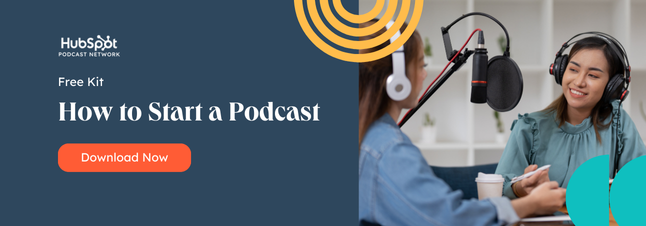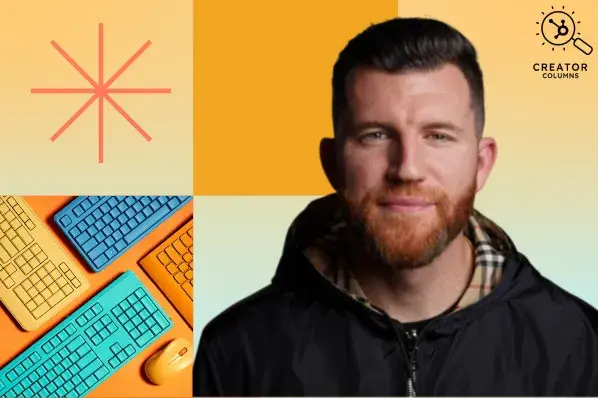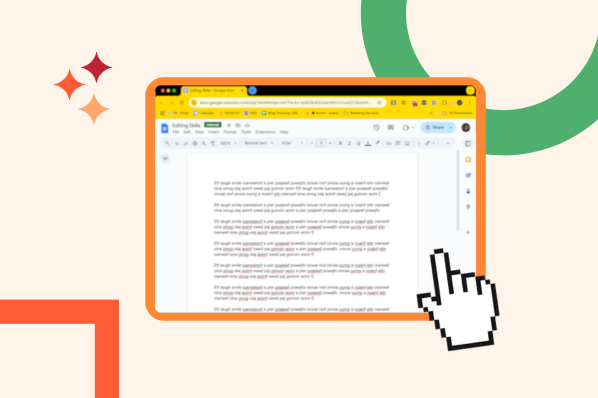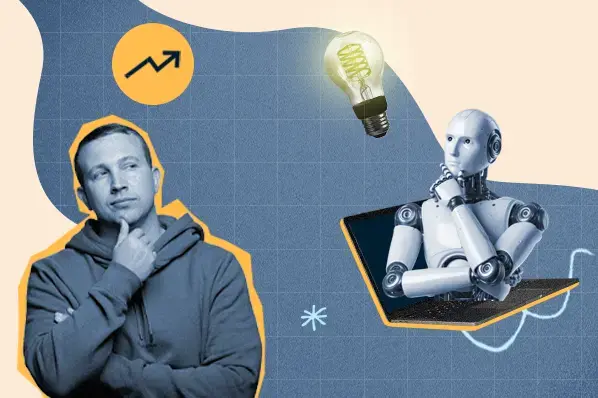When does it make sense to convert content into a podcast?
If you're looking to leverage existing content you ultimately have two main channels to focus on — video, or your blog.
The first thing you need to do is audit your existing content to get a sense for your most popular topics. At this point, don't worry about whether the content format should be blog posts, videos, ebooks, or social posts. Instead, just focus on what topics and content are resonating the most with your audience.
Once you've identified a few core topics that are most relevant to your brand, you'll have an easier time brainstorming podcast show ideas.
Additionally, this is obvious but needs to be said — a podcast is more than one episode. When thinking about starting a podcast from scratch or using existing content, you need to have enough content to justify multiple episodes. If you're struggling to think of more than 2-3 episodes, it's likely the content is too narrow.
A branded podcast can either be a limited run season, or ongoing where episodes are released regularly in perpetuity. Seasonal shows work well when you have a limited amount of content around a certain topic. Ongoing shows, on the other hand, tend to be easier to produce when you have an endless stream of updates, such as news or reviews.
One method isn't necessarily better than another — you should select seasonal or ongoing based on the goals of your podcast and the type of content you produce.
How to Convert Video Content into a Podcast
Here at HubSpot, we have an enormous library of video content but only a small portion of it works for converting into a podcast. Here's what excludes our video content from becoming a podcast:
- Bad Audio: Hands down the number one biggest issue for converting video content into a podcast. Sometimes videos are recorded with lapel mics that pick up lots of t-shirt scratches, and can sometimes make people sound like they're recording from a fishbowl.
- Referencing Visuals: Often explainer videos, product overviews, and educational lessons reference visuals that appearing in the video. Videos that make use of visual aids are generally not a good fit for podcasts because the people obviously will not see what the presenter is referring to.
- Too Short: Podcasts tend to be longer-form content than video or blogs. Many videos that companies produce are relatively short, ~2 minutes. For someone looking to listen to your podcast, this may not be substantial enough in terms of the information covered.
So what videos do work for converting to a podcast? One of the best examples we have is our show, Agency Unfiltered.
The show began as a web-series of interviews that didn't use any visual aids in the conversations. Listeners were reaching out to the show's host, Kevin, asking if it could be converted into a podcast so they could listen on their commute or at home. So we took the audio (high-quality) and turned it into a podcast.
Kevin Dynn told me, "One of the biggest pieces of feedback we had for Agency Unfiltered was to release it as a podcast. What we found is that partners wanted the audio content available to be downloaded and listened to on their commutes."
Dynn added, "For us, it was a piece of cake to do. We already had titles, descriptions, the intro and outro snippets, and the full audio files. And thus far, the process has been easy and the results have been very encouraging."
Within a few weeks, the podcast layered a whole new group of listeners on top of those who watched the videos. In fact, on one of the recent videos, we saw a 70% uplift in people engaging with the content simply by turning it into a podcast.
It's important to note — we have not seen podcast downloads cannibalize video views.
Making the video series available as a podcast has simply added value to the audience because it allows people to engage with the content however, and whenever, they want.
Alternatively, if you don't have a video series, blog content can serve as an excellent jumping-off point for planning and creating a podcast. Let's explore that option, next.
How to Convert Blog Content Into a Podcast
Here at HubSpot, we highly encourage marketers to think about their content from a pillar-cluster model. This model is incredibly helpful, both for SEO and for organizing your content in a way that's helpful for readers. The great thing about the pillar cluster model for blogging is it aligns well with the seasonal approach to podcasting.
First, try thinking about your overall topic cluster as a season of the show, with each individual blog post being a distinct episode. Following this path, it makes it much easier to plan a season's worth of content that all deals with a similar theme or topic without being repetitive.
Like video, only a small portion of blog content will work for turning into a podcast. Here is a quick way to exclude content that's not a good fit:
- Listicles and Roundups: No one wants to hear you read a list of things they can't click on.
- Articles that Rely on Visuals: There are exceptions to this rule, but for the most part, if the post is highly visual it's unlikely to be a good fit for a podcast episode.
Once you decide what topics your show will cover, and which blog posts will serve as a good jumping-off point for episodes, you can finally go through the process of recording.
When recording, it's important to remember your episodes should never just be a host reading an article. Writing for people listening is much different than writing for people reading. If you don't update your content to be audio-first it will sound stiff, boring, and inauthentic.
To help you write scripts for a podcast you need to have all of the parts of a successful podcast episode. Check out The Anatomy of a Perfect Podcast Episode for help on how to create a great podcast episode.
How to Combine Text and Video to Create a Podcast
At HubSpot, we are combining the video and blog approach in the upcoming season of the Skill Up podcast. Each season is based around a topic cluster we have identified as valuable based on blog content and keyword search volume. This helps us plan seasons, as well as specific episodes. SEO research also helps us with episode titling and episode descriptions.
In terms of production, we're using snippets of audio from our videos in order to leverage existing interviews. We will also be using a single narrator each season who will guide listeners through the content. Using a host will also make it easier to add flair to an existing interview without having to re-record the conversations.
Overall, we're leveraging all the content we have but keeping a tight focus on making it enjoyable for podcast listeners specifically.
Advice for Repurposing Existing Content into a Podcasts
When repurposing content for podcasts, remember to always ask yourself — would I listen to this? Ultimately, if your audio content isn't good enough for the creator to listen to it, then you shouldn't be making it. You need to first and foremost think about your listener and make sure you're providing them with excellent content.
You can use your existing content as a jumping-off point for creating a show. The last question is simple: What's stopping you from starting now?

Content Creation


![12 ebook templates for InDesign, PowerPoint, and Google Docs [free download]](https://53.fs1.hubspotusercontent-na1.net/hubfs/53/free-ebook-templates-1-20240529-4957105.webp)




![How to Create an Ebook From Start to Finish [Free Ebook Templates]](https://53.fs1.hubspotusercontent-na1.net/hubfs/53/how-to-create-an-ebook-1-20250128-3015373.webp)
![How to Write a Content Brief [Template + Examples]](https://53.fs1.hubspotusercontent-na1.net/hubfs/53/content-brief-1-20250120-7521165.webp)


